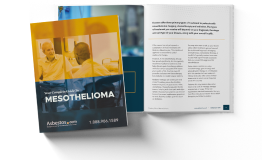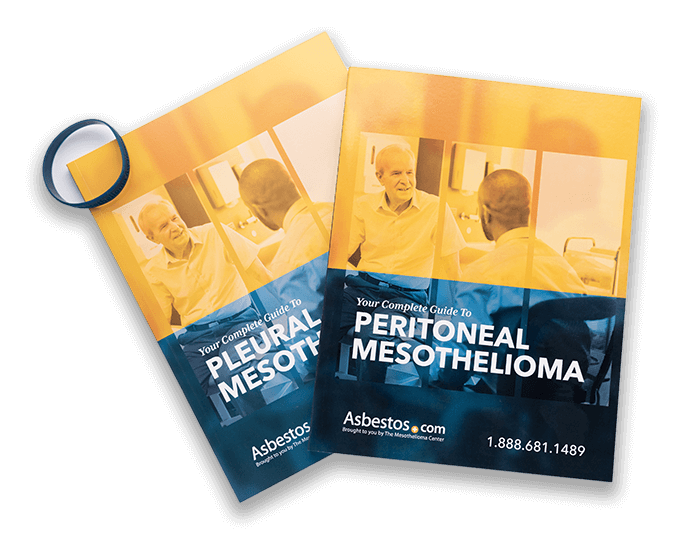Written by Michelle Whitmer | Scientifically Reviewed By Arti Shukla, Ph.D. | Edited By Walter Pacheco | Last Update: July 17, 2024
Asbestos Exposure in Vermont
In 1899, the New England Asbestos Mining and Milling Company began extracting asbestos from Mount Belvidere. By 1929, the mines in the area were supplying the entire U.S. all its asbestos needs. Despite the hazards, the mines continued operations into the 1990s.
Power plants, hospitals, schools and manufacturing facilities throughout Vermont used asbestos. Asbestos exposure may cause asbestosis, lung cancer and mesothelioma. Vermont now has strict regulations on asbestos and monitors sites where exposure may occur.
Cutting-edge treatment for mesothelioma is available in Vermont. In October 2021, the University of Vermont Cancer Center announced a clinical trial for mesothelioma. The trial involves a drug known as RSO-021, which blocks a cancer cell’s ability to remove toxic waste, causing it to die from its own toxic byproducts.
Vermont’s Occupations and Environmental Areas at Risk
Asbestos mining operations at Belvidere Mountain provided a major source of asbestos exposure. The New England Asbestos Mining and Milling Company and Vermont Product Corporation owned the mine.
Employees experienced exposure through mining, transporting or processing the mineral. Although the Belvidere Mountain asbestos mines were the first in the U.S., they were also the last to close, finally shutting down in 1993.
Former employees of the companies that operated the mine may just now start to feel the effects of their exposure. Large quantities of asbestos around the mines and in an estimated 30 million tons of rock.
The Vermont Agency of Natural Resources launched an investigation into the mines in 2004. There was concern about the erosion of hazardous materials that could be reaching nearby streams and wetlands.
The investigation showed no increase in mesothelioma risk for residents living in the towns near the mines. The five cases of mesothelioma reported in the area from 1996 to 2005 were all determined to have been occupationally related.
W.R. Grace also shipped one ton of its contaminated vermiculite from Libby, Montana, to a processing plant in Morrisville, Vermont. These plants “popped” or exfoliated the vermiculite to make attic insulation and other products. Those who worked at the plant were at serious risk of exposure. People who lived in the surrounding neighborhoods got exposed too.
Another occupational source for exposure is the Vermont Yankee Power Plant in the city of Vernon. Power plants have a history of exposing employees to hazardous substances. The plant began operations in 1972. Asbestos use was prevalent in power plants. It was likely used to insulate pipes, generators, boilers and electrical components. Employees asked to repair these pieces of equipment were at an increased risk for exposure.
Other power plants in the state where workers were potentially exposed include:
- Montpelier and Barre Light and Power Company
- Corry Deavitt Frost Electric Company
- Consolidated Light and Power Company
- Vermont Electric Power Company Inc.
- St. Albans Electric Light and Power Company
In 2006, the Vermont Department of Environmental Conservation warned of asbestos auto parts. The department said auto repair workers were most at risk. Especially those who work with brake pads, clutches and other asbestos-containing friction products. They advised the use of water and special equipment to prevent fibers from being released into the work area.
Paper mills and textile factories are also known for using asbestos products throughout their facilities.
Some of the paper mill and textile factory locations in Vermont where exposure may have occurred are:
- White Mountain Paper Company
- Green Mountain Paper
- International Paper Company
- Black Cat Textiles
In 2008, the Montpelier school district faced asbestos concerns before the start of the school year. Union Elementary, Main Street Middle School and Montpelier High School all delayed the first day of school so that exposure risks could be eliminated. According to a lawsuit filed against an area flooring company, proper removal of asbestos-containing materials did not occur. Schools in general have a history of using products that contain asbestos.
The Vermont Occupational Safety and Health Administration (VOSHA) regulates asbestos exposure in occupational settings. For additional information concerning VOSHA requirements in the workplace, contact the Vermont Department of Labor and Industry at (802) 828-4000.
Windsor Mine in Vermont
Vermont is also at the center of allegations against Johnson & Johnson. A mine in Windsor, Vermont, was a major talc supplier for the consumer goods giant.
Documents unsealed in September 2017 they knew the early 1970s that the Windsor mine had asbestos. J&J employees got trained to reassure the public that baby powder products were never contaminated.
In May 1974, a J&J official recommended the “use of citric acid in the depression of chrysotile asbestos” from the talc extracted from the Windsor mine. A J&J report from a year earlier noted they were working with the government to check for fibers that could prove the presence of asbestos at the site.
The mine dates back to 1964, when the Eastern Magnesia Talc Co. began operating a modem froth flotation plant in Windsor. Johnson & Johnson acquired the operation as a subsidiary in 1972 and ran it until 1989.
State Regulations
Vermont’s Department of Health oversees asbestos regulations. The department’s Outreach Program is designed to educate the public about state and federal laws, including those implemented by the EPA.
Vermont’s Department of Health also has an Enforcement and Compliance Inspection Program to manage renovation and demolition projects involving dangerous materials. For more information, visit their informational resource on asbestos.
Proper disposal of asbestos-containing materials is managed under Vermont’s Solid Waste Management Rules. If these materials need to be disposed of, a contractor certified by the Vermont Department of Health must pick up and deliver the waste. All asbestos-containing waste must be clearly labeled as follows: “Caution – Contains Asbestos Fibers – Avoid Creating Dust – Cancer and Lung Disease Hazard.”
In January 2019, Vermont’s attorney general signed a petition asking the U.S. Environmental Protection Agency to require companies to file reports on the asbestos products they import. Attorneys general from 13 other states and the District of Columbia also signed the petition. The EPA had recently denied a similar petition in December 2018.
This Page Contains 5 Cited Articles
The sources on all content featured in The Mesothelioma Center at Asbestos.com include medical and scientific studies, peer-reviewed studies and other research documents from reputable organizations.
- Strotmeyer, K. (2021, October 29). UVM Cancer Center Research Leads to First-of-Its-Kind Clinical Trial of Mesothelioma Treatment. Retrieved from https://www.uvm.edu/news/story/uvm-cancer-center-research-leads-first-its-kind-clinical-trial-mesothelioma-treatment
- Asbestos Regulatory Program. Vermont Department of Health. (2011). http://healthvermont.gov/enviro/asbestos/asbestosregulatoryprogram.aspx
- Centers for Disease Control and Prevention, National Center for Health Statistics. (2021). Underlying Cause of Death 1999-2017 on CDC WONDER Online Database. http://wonder.cdc.gov/ucd-icd10.html
- Insurance Journal. (2013, October 21). Settlement Reached in Vermont Asbestos Mine Cleanup. https://www.insurancejournal.com/news/east/2013/10/21/308702.htm
- Cecchini, K. (2019, January 31). ADAO Applauds State Attorneys General Petition to EPA to Require Reporting on Asbestos Imports and Uses. https://www.businesswire.com/news/home/20190131005875/en/








